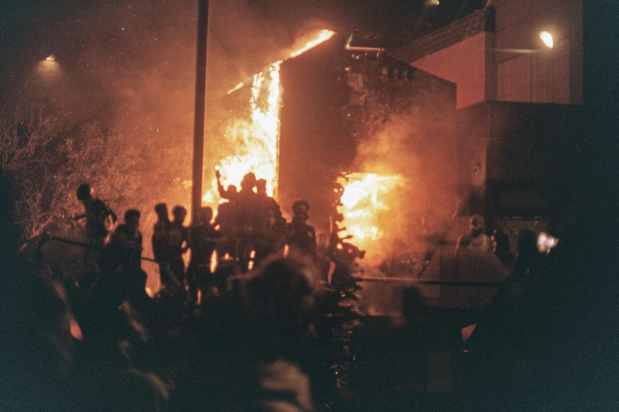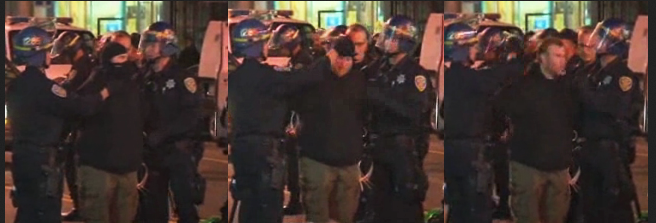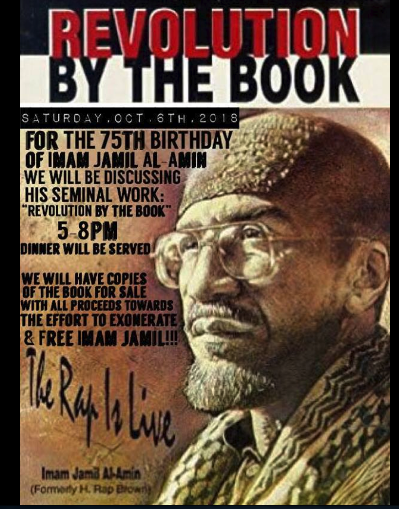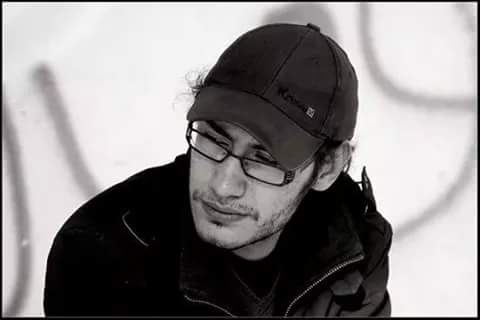On the early morning of April 20, 1989, Trisha Meili’s injured body was discovered in Central Park. Meili, who is white, had survived a violent rape and beating. In a matter of days, five Black and Latino teens — Antron McCray, Kevin Richardson, Raymond Santana, Yusef Salaam, and Korey Wise — confessed to being present at the rape. Their confessions were extracted only after more than 30 hours of coercive interrogations by police officers and by prosecutor Linda Fairsten who, at the time, was the head of the sex crimes unit at the Manhattan District Attorney’s office.
Fairstein, long celebrated as a champion for women’s rights, was a strong proponent of what we know today as carceral feminism, which relies heavily on policing, prosecution, and punishment as a means of tackling violence against women such as domestic abuse, rape, and sexual assault. As the prosecutor in the Central Park 5 case, Fairstein helped facilitate the wrongful conviction of these five boys of color. Indeed, as Anne Gray Fischer conveyed, Fairstein “perpetuated a long 20th-century American legal tradition of violently punishing black and Latino men in the name of the protection of white womanhood.”
Years later, while serving a 33 year sentence on unrelated charges, Matias Reyes confessed to Meili’s rape. The Central Park 5 subsequently had their convictions vacated in 2002.
The case of the exonerated five captures so much of what is wrong with carceral feminism. In her groundbreaking book, Decriminalizing Domestic Violence, lawyer Leigh Goodmark argues that criminalization primarily “benefits those who feel safer as a result of interventions but are immune from most of its costs: people who don’t share children with their partner, people who are no longer in relationships with those partners, people who don’t rely on their partners in any way, higher-income people.” To be sure, it is uniquely upper class white women, such as Meili, who are able to reap the benefits of carceral feminism — and these benefits necessarily come at the expense of poor people and communities of color.
The Violence Against Women Act (VAWA) epitomizes this increased reliance on carceral punishment as a means of acheiving justice for victims of gender-based crimes. In fact, VAWA was an extension of the notorious Violent Crime Control and Law Enforcement Act, a $30 billion piece of legislation, and the largest crime bill in US history. The bill expanded police and prison budgets, employing one hundred thousand new police officers and providing nearly $10 billion to prisons.
At its core, VAWA promotes an ever-increasing carceral approach to violent gender-based crimes. In her book, Goodmark highlights how VAWA’s carceral tone became more pronounced since its inception. Indeed, when the legislation was first passed in 1994, the bulk of its funding was funneled into prisons and police departments; as of 2013, only 15 percent of VAWA’s grant funds go toward social services even though, as Goodmark has cited, “repeated studies [show] that housing is the single greatest need identified by people subjected to abuse.” VAWA woefully neglects the economic and social safety nets which are paramount in enabling victims to leave their abusers, and to actually survive.
In 1978, Shelley Fernandez, an administrator at San Francisco’s La Casa de Las Madres women’s shelter, testified to the US Commission on Civil Rights on this very issue. She stated: “We need money for teaching sheltered children, bilingual and biculturally. We need money for the day-to-day operation of shelters, ongoing rent, food, furniture, clothing, remodeling, upkeep, and paid staff. We need money for supplemental housing because we are already full.”
Ignoring these demands which called for state financial support of community organizations geared toward helping victim-survivors of gender-based crimes, carceral feminists have, instead, pushed for mandatory arrest policies which require law enforcement to make an arrest when responding to a domestic violence call. Mandatory arrests have been shown to lead to greater fatalities, with research showing that victims are 64 percent more likely to be killed if their partners are arrested instead of being warned and permitted to remain in the home. In many cases, domestic violence homicides occur in homes which police have frequented multiple times. A study in California also revealed that mandatory arrest policies increased arrests of men by 60 percent and arrests of women by 400 percent. In spite of this, today, at least half of all states enforce this policy.
Carceral feminists conveniently turn a blind eye to the fact that women are currently the fastest growing segment of the incarcerated population, and that low-income women of color are disproportionately represented in US prisons. An overwhelming majority of incarcerated women had suffered interpersonal violence prior to their arrest. In fact, as many as 90 percent of women who are incarcerated for killing a man were battered by that same individual.
Proponents of carceral feminism ignore the ways in which racialized disparities leave certain communities particularly vulnerable to violence at both the individual and institutional level. Gender-based violence does not occur in a vacuum; systemic factors involving racism, sexism, and poverty all work together in ways which exacerbate the likelihood of abuse occurring in marginalized communities. In Frantz Fanon’s masterful work, The Wretched of the Earth, he illustrates how the afflictions of colonialism on a people will inevitably lead them to seek relief from the muscular tension that is a result of colonial domination. Often, as Fanon cites, the first phase of this relief manifests as interpersonal violence — i.e., “fratricidal struggles” — between the colonized. This concept can certainly be extended to situations involving domestic and sexual violence.
Still, in recent years, feminist activists have proliferated the “everywoman” myth which asserts that domestic violence and other gender-based crimes impact all women equally, regardless of race, class, or immigration status. Though perhaps well-intentioned, this claim is simply not true and, as University of Illinois professor Beth Richie notes, “the assumption of ‘everywoman’ fell into the vacuum created by a white feminist analysis that did not very successfully incorporate an analysis of race and class.”
Take, for example, the fact that Black and Indigenous women face the highest risk of domestic violence homicide. Or the fact that increased collaboration between the criminal system and immigration enforcement has left undocumented victims of sexual and domestic violence with little to no options on how to proceed for support. Studies have shown that domestic violence reports to the police have substantially declined among undocumented women out of fear of themselves or their partners being deported. Further, it is imperative to acknowledge how poverty and domestic violence share a corresponding relationship. Multiple studies have revealed that the lower a couple’s income bracket is, the higher the chances are that a partner will engage in intimate violence. Carceral feminism necessarily reduces systemic violence to individual problems and does not acknowledge the fact that police and prisons are themselves sources and sites of violence.
For example, Derek Chauvin, the police officer who murdered George Floyd, responded to a domestic violence call in 2008. Upon arriving on scene, he knocked down the bathroom door where an unarmed Ira Toles was hiding, and subsequently shot him twice in his stomach. Chauvin’s response to the domestic violence call ultimately left the victim in extreme distress and left Toles severely wounded. Rather than facing accountability for his actions, Chauvin was awarded a medal of valor.
These examples illustrate how deeply flawed our thinking is whenever we conflate punishment with accountability. Carceral feminism criminalizes individuals for their actions, rather than investing in solutions to the epidemic of violent gender-based crimes. Because carceral feminism frames gender-based violence as transgressions against the state, rather than against victims themselves, the needs of victim-survivors are routinely neglected. Feminist activist Lola Olufemi critiques this approach for its “individualistic response to harm — it locates the problem in the body of the ‘bad’ person rather than connecting patterns of harm to the conditions in which we live.” Though it is not a solution, criminalization has proved to be the default response to these issues. This unyielding commitment to a carceral state is entrenched in the belief that violent crimes against women happen in isolation.
If we truly care about ending patriarchal violence, it is crucial that we confront our own attitudes about justice, and to imagine what it can look like outside of a punitive context. Employing policing, prosecution, and punishment in an effort to attain accountability obstructs our own responsibility to achieve the economic, racial, and social justice which are fundamental to the eradication of patriarchal violence, and which would facilitate the safety and self-determination of all survivors.








